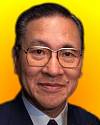
Born 29 Jan 1930; died 23 Apr 2011 at age 81. quotes
Japanese business executive who as a former president and chairman of Sony is credited with developing the compact disc. He insisted that a CD should hold 75 minutes of music, sufficient for the entire Beethoven's Ninth Symphony, which accounts for the designed 4.8-inch diameter. Having had a career as an opera singer before he joined the company in the 1950s, he remained a music connoisseur, and recognized the importance of improved sound quality made possible by the CD. Sony issued the world's first CD in 1982, and in Japan, within five years the format overtook LP record sales. He rose through the company to become its chief executive in 1989, always pursuing improvements to quality and appealing design, and led Sony's expansion from hardware to software to entertainment including music, films and video games.«
Japanese business executive who as a former president and chairman of Sony is credited with developing the compact disc. He insisted that a CD should hold 75 minutes of music, sufficient for the entire Beethoven's Ninth Symphony, which accounts for the designed 4.8-inch diameter. Having had a career as an opera singer before he joined the company in the 1950s, he remained a music connoisseur, and recognized the importance of improved sound quality made possible by the CD. Sony issued the world's first CD in 1982, and in Japan, within five years the format overtook LP record sales. He rose through the company to become its chief executive in 1989, always pursuing improvements to quality and appealing design, and led Sony's expansion from hardware to software to entertainment including music, films and video games.«
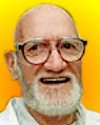
Born 29 Jan 1927; died 19 Oct 2004 at age 77.
Lewis Frederick Urry was a Canadian-American chemical engineer who invented the ubiquitous alkaline batteries and, later, lithium batteries. After a few years working in Canada for the company that made Eveready batteries, he was transferred in 1955 to its Cleveland, Ohio, laboratory where he began work on a new battery with better life-span than the carbon-zinc type of the time. He succeeded by using manganese dioxide, an alkaline electrolyte and powdered zinc (which he realized had greater surface area than solid zinc). A patent was filed 9 Oct 1957, issued 15 Nov 1960, No. 2,960,558. Production began in 1959. Alkaline batteries are estimated to be 80% of all dry cell batteries now sold in the world. The Smithsonian Institution displays his prototype alkaline battery. Urry held over 50 patents.«
Lewis Frederick Urry was a Canadian-American chemical engineer who invented the ubiquitous alkaline batteries and, later, lithium batteries. After a few years working in Canada for the company that made Eveready batteries, he was transferred in 1955 to its Cleveland, Ohio, laboratory where he began work on a new battery with better life-span than the carbon-zinc type of the time. He succeeded by using manganese dioxide, an alkaline electrolyte and powdered zinc (which he realized had greater surface area than solid zinc). A patent was filed 9 Oct 1957, issued 15 Nov 1960, No. 2,960,558. Production began in 1959. Alkaline batteries are estimated to be 80% of all dry cell batteries now sold in the world. The Smithsonian Institution displays his prototype alkaline battery. Urry held over 50 patents.«
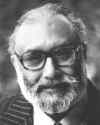
Born 29 Jan 1926; died 21 Nov 1996 at age 70. quotes
Pakistani-British nuclear physicist who shared the 1979 Nobel Prize for Physics with Steven Weinberg and Sheldon Lee Glashow. Each had independently formulated a theory explaining the underlying unity of the weak nuclear force and the electromagnetic force. His hypothetical equations, which demonstrated an underlying relationship between the electromagnetic force and the weak nuclear force, postulated that the weak force must be transmitted by hitherto-undiscovered particles known as weak vector bosons, or W and Z bosons. Weinberg and Glashow reached a similar conclusion using a different line of reasoning. The existence of the W and Z bosons was eventually verified in 1983 by researchers using particle accelerators at CERN.
Pakistani-British nuclear physicist who shared the 1979 Nobel Prize for Physics with Steven Weinberg and Sheldon Lee Glashow. Each had independently formulated a theory explaining the underlying unity of the weak nuclear force and the electromagnetic force. His hypothetical equations, which demonstrated an underlying relationship between the electromagnetic force and the weak nuclear force, postulated that the weak force must be transmitted by hitherto-undiscovered particles known as weak vector bosons, or W and Z bosons. Weinberg and Glashow reached a similar conclusion using a different line of reasoning. The existence of the W and Z bosons was eventually verified in 1983 by researchers using particle accelerators at CERN.
Cosmic Anger: Abdus Salam, The First Muslim Nobel Scientist, by Gordon Fraser. - book suggestion.
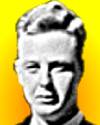
Born 29 Jan 1921; died 30 Nov 2019 at age 98. quotes
Anderson Hunter Dupree was an American science historian and writer who followed his B.A. in History with wartime Navy service, including as a watch officer in the Combat Information Center of the USS Tennessee. That experience of electronic computers and radar systems, swayed his intellectual development as a historian toward science and technology. His Harvard doctoral thesis was on the life and work of Asa Gray, a leading 19th-century American botanist. In 1957, Dupree published a landmark report on “Science in the Federal Government: a History of Policies and Activities to 1940.” He also wrote the seminal biography, Asa Gray, 1810-1888 (1959). The graves of Gray and Dupree are a few steps apart in a Cambridge cemetery.«
Anderson Hunter Dupree was an American science historian and writer who followed his B.A. in History with wartime Navy service, including as a watch officer in the Combat Information Center of the USS Tennessee. That experience of electronic computers and radar systems, swayed his intellectual development as a historian toward science and technology. His Harvard doctoral thesis was on the life and work of Asa Gray, a leading 19th-century American botanist. In 1957, Dupree published a landmark report on “Science in the Federal Government: a History of Policies and Activities to 1940.” He also wrote the seminal biography, Asa Gray, 1810-1888 (1959). The graves of Gray and Dupree are a few steps apart in a Cambridge cemetery.«
Asa Gray: American Botanist, Friend of Darwin, by A. Hunter Dupree. - book suggestion.
Born 29 Jan 1908.
Italian geologist and prehistorian, known for his research on the stratigraphy and paleontology of the Triassic invertebrates (from 190-225 million years ago) and the Permian vertebrates (from 225-280 million years ago). His works include studies of the tectonics (the movement and deformation of the Earth's surface) and stratigraphy (the description and interpretation of rock successions) of the Dolomite Alps and development of a new theory on their evolution. He also discovered a new Mousterian prehistoric culture, the Bernardinian.
Italian geologist and prehistorian, known for his research on the stratigraphy and paleontology of the Triassic invertebrates (from 190-225 million years ago) and the Permian vertebrates (from 225-280 million years ago). His works include studies of the tectonics (the movement and deformation of the Earth's surface) and stratigraphy (the description and interpretation of rock successions) of the Dolomite Alps and development of a new theory on their evolution. He also discovered a new Mousterian prehistoric culture, the Bernardinian.
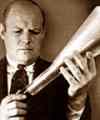
Born 29 Jan 1901; died 15 Nov 1965 at age 64.
Allen B(alcom) Du Mont was an American engineer who perfected the first commercially practical cathode-ray tube, which was not only vitally important for much scientific and technical equipment but was the essential component of the modern television receiver. The early cathode ray tubes were imported from Germany at high cost, but they burned out after 25 or 30 hours. In the 1930's, he simplified and improved the production of cathode ray tubes lasting a thousand hours. A financially successful by-product of his television work was the cathode ray oscillograph. After WW II, Du Mont had become the industry's first millionaire, investing also in broadcasting stations. The Du Mont Broadcasting Co. he began in 1955 grew to become Metromedia, Inc.
Allen B(alcom) Du Mont was an American engineer who perfected the first commercially practical cathode-ray tube, which was not only vitally important for much scientific and technical equipment but was the essential component of the modern television receiver. The early cathode ray tubes were imported from Germany at high cost, but they burned out after 25 or 30 hours. In the 1930's, he simplified and improved the production of cathode ray tubes lasting a thousand hours. A financially successful by-product of his television work was the cathode ray oscillograph. After WW II, Du Mont had become the industry's first millionaire, investing also in broadcasting stations. The Du Mont Broadcasting Co. he began in 1955 grew to become Metromedia, Inc.
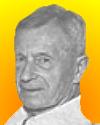
Born 29 Jan 1888; died 16 Jun 1970 at age 82.
English mathematician and physicist noted for his research in geophysics. After graduation (1910) he worked at the Greenwich Observatory, but returned to Cambridge upon the outbreak of WW I. Between 1915 and 1917 he completed a series of important papers on thermal diffusion and the fundamentals of gas dynamics. He developed systematic approximations to the Maxwell-Boltzmann formulation for the velocity distribution function for interacting particles under general force laws. During WW II he worked on military operational research and incendiary bomb problems. Chapman's main area of research was geomagnetism, beginning in 1913 and extending to terrestrial and interplanetary magnetism, the ionosphere and the aurora borealis.
English mathematician and physicist noted for his research in geophysics. After graduation (1910) he worked at the Greenwich Observatory, but returned to Cambridge upon the outbreak of WW I. Between 1915 and 1917 he completed a series of important papers on thermal diffusion and the fundamentals of gas dynamics. He developed systematic approximations to the Maxwell-Boltzmann formulation for the velocity distribution function for interacting particles under general force laws. During WW II he worked on military operational research and incendiary bomb problems. Chapman's main area of research was geomagnetism, beginning in 1913 and extending to terrestrial and interplanetary magnetism, the ionosphere and the aurora borealis.
Born 29 Jan 1880; died 6 Jul 1940 at age 60. quotes
Alexander (Alexandrovich) Goldenweiser was an Russian-American anthropologist whose analyses of cultural questions ranged widely, encompassing intellectual movements in psychology and psychoanalysis. In particular, he suggested that cultural diffusion is not a mechanical process but, rather, depends in part on the receptiveness of cultures to proffered traits. Goldenweiser did very little field work in anthropology - less than ten months on six trips to the Iroquois on the Grand River reservation in Ontario (1911-13) - and is said to have disliked it. He was, however, a stimulating and versatile popular lecturer. Theory and methodology were his major concern, with folk psychology, religion and magic, and social organization in the forefront of his topical interests.
Alexander (Alexandrovich) Goldenweiser was an Russian-American anthropologist whose analyses of cultural questions ranged widely, encompassing intellectual movements in psychology and psychoanalysis. In particular, he suggested that cultural diffusion is not a mechanical process but, rather, depends in part on the receptiveness of cultures to proffered traits. Goldenweiser did very little field work in anthropology - less than ten months on six trips to the Iroquois on the Grand River reservation in Ontario (1911-13) - and is said to have disliked it. He was, however, a stimulating and versatile popular lecturer. Theory and methodology were his major concern, with folk psychology, religion and magic, and social organization in the forefront of his topical interests.
Born 29 Jan 1863; died 15 Apr 1948 at age 85.
U.S. geologist and educator who, as chairman of committee on measurement of geologic time of the National Research Council (1922-46), originated, promoted, and directed research on the determination of the age of the Earth. He was petrographer, assistant state geologist, and state geologist for the Michigan State Geological Survey from 1889 to 1909.
U.S. geologist and educator who, as chairman of committee on measurement of geologic time of the National Research Council (1922-46), originated, promoted, and directed research on the determination of the age of the Earth. He was petrographer, assistant state geologist, and state geologist for the Michigan State Geological Survey from 1889 to 1909.
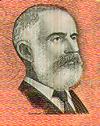
Born 29 Jan 1850; died 6 Jul 1915 at age 65. quotes
Australian aeronaut and inventor best known for his invention of the box kite. Hargrave “flew” on 12 Nov 1894, by attaching himself to a huge four kite construction attached to the ground by piano wire. Due to their abilities to carry heavy payloads, steady flight, and capacity for high altitude flight, these kites have had many industrial and military uses in the past. Box kites were used until the 1930s to carry meteorological equipment for high altitude weather studies and by the Royal Air Force as sea rescue equipment to deliver radio aerials. Hargrave also made important studies of wing surfaces and worked with rotary engines and gliders. more
Australian aeronaut and inventor best known for his invention of the box kite. Hargrave “flew” on 12 Nov 1894, by attaching himself to a huge four kite construction attached to the ground by piano wire. Due to their abilities to carry heavy payloads, steady flight, and capacity for high altitude flight, these kites have had many industrial and military uses in the past. Box kites were used until the 1930s to carry meteorological equipment for high altitude weather studies and by the Royal Air Force as sea rescue equipment to deliver radio aerials. Hargrave also made important studies of wing surfaces and worked with rotary engines and gliders. more
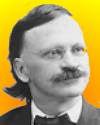
c. 1887
Born 29 Jan 1838; died 24 Feb 1923 at age 85.
American chemist who is best known for his collaboration with the physicist A.A. Michelson in an attempt to measure the relative motion of the Earth through a hypothetical ether (1887). He also studied the variations of atmospheric oxygen content. He specialized in accurate quantitative measurements, such as those of the vapour tension of mercury, thermal expansion of gases, or the combining weights of hydrogen and oxygen. Morley assisted Michelson in the latter's persuit of measurements of the greatest possible accuracy to detect a difference in the speed of light through an omnipresent ether. Yet the ether could not be detected and the physicists had seriously to consider that the ether did not exist, even questioning much orthodox physical theory.
American chemist who is best known for his collaboration with the physicist A.A. Michelson in an attempt to measure the relative motion of the Earth through a hypothetical ether (1887). He also studied the variations of atmospheric oxygen content. He specialized in accurate quantitative measurements, such as those of the vapour tension of mercury, thermal expansion of gases, or the combining weights of hydrogen and oxygen. Morley assisted Michelson in the latter's persuit of measurements of the greatest possible accuracy to detect a difference in the speed of light through an omnipresent ether. Yet the ether could not be detected and the physicists had seriously to consider that the ether did not exist, even questioning much orthodox physical theory.
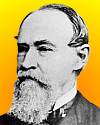
Born 29 Jan 1817; died 18 Sep 1891 at age 74.
American meteorologist who was an important contributor to the understanding of oceanic and atmospheric circulation. He was able to show the interrelation of the various forces upon the Earth's surface, such as gravity, rotation and friction. Ferrel was first to mathematically demonstrate the influence of the Earth's rotation on the presence of high and low pressure belts encircling the Earth, and on the deflection of air and water currents. The latter was a derivative of the effect theorized by Gustave de Coriolis in 1835, and became known as Ferrel's law. Ferrel also considered the effect that the gravitational pull of the Sun and Moon might have on the Earth's rotation and concluded (without proof, but correctly) that the Earth's axis wobbles a bit. more
American meteorologist who was an important contributor to the understanding of oceanic and atmospheric circulation. He was able to show the interrelation of the various forces upon the Earth's surface, such as gravity, rotation and friction. Ferrel was first to mathematically demonstrate the influence of the Earth's rotation on the presence of high and low pressure belts encircling the Earth, and on the deflection of air and water currents. The latter was a derivative of the effect theorized by Gustave de Coriolis in 1835, and became known as Ferrel's law. Ferrel also considered the effect that the gravitational pull of the Sun and Moon might have on the Earth's rotation and concluded (without proof, but correctly) that the Earth's axis wobbles a bit. more
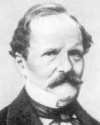
Born 29 Jan 1810; died 14 May 1893 at age 83. quotes
German mathematician whose introduction of ideal numbers, which are defined as a special subgroup of a ring, extended the fundamental theorem of arithmetic to complex number fields. He worked on Function theory, and extended Carl Gauss's work on hypergeometric series, giving developments that are useful in the theory of differential equations. He was the first to compute the monodromy groups of these series. Later. Kummer devoted himself to the study of the ray systems, but treated these geometrical problems algebraically. He also discovered the fourth order surface based on the singular surface of the quadratic line complex. This Kummer surface has 16 isolated conical double points and 16 singular tangent planes.
German mathematician whose introduction of ideal numbers, which are defined as a special subgroup of a ring, extended the fundamental theorem of arithmetic to complex number fields. He worked on Function theory, and extended Carl Gauss's work on hypergeometric series, giving developments that are useful in the theory of differential equations. He was the first to compute the monodromy groups of these series. Later. Kummer devoted himself to the study of the ray systems, but treated these geometrical problems algebraically. He also discovered the fourth order surface based on the singular surface of the quadratic line complex. This Kummer surface has 16 isolated conical double points and 16 singular tangent planes.
Born 29 Jan 1794; died 7 Jan 1878 at age 83. quotes
French natural philosopher who originated the aphorism, omnis cellula e cellula (every cell from a cell), which Rudolf Virchow popularized. Raspail was one of the early biologists who set cell theory in motion. As an expert microscopist, and made precise obserations to make an early description of the general characteristics of the plant cell. Raspail was also a founder of cytochemistry. He used the iodine-starch color reaction to the cell and its products, and discovered histochemical reactions specific to protides and glucides. These were precursors to later biochemistry that could better recognize their importance. He was also a founder of modern parasitology, and provided new data on the causes of diseases, including the itch mite agent of scabies.«
French natural philosopher who originated the aphorism, omnis cellula e cellula (every cell from a cell), which Rudolf Virchow popularized. Raspail was one of the early biologists who set cell theory in motion. As an expert microscopist, and made precise obserations to make an early description of the general characteristics of the plant cell. Raspail was also a founder of cytochemistry. He used the iodine-starch color reaction to the cell and its products, and discovered histochemical reactions specific to protides and glucides. These were precursors to later biochemistry that could better recognize their importance. He was also a founder of modern parasitology, and provided new data on the causes of diseases, including the itch mite agent of scabies.«
Born 29 Jan 1773; died 29 Sep 1839 at age 66.
German mineralogist who devised the Mohs scale to compare mineral harness, illustrated by ten common or readily-available minerals. They are ranked by which can scratch another. At the beginning of his scale, 1 to 3, are talc, gypsum and calcite. At the top, the hardest 8 to 10, are topaz (including emerald and aquamarine), corundum (including as varieties sapphire and ruby) and diamond. Diamond is known for its common use to edge cutting tools, because it is four times as hard than even corundum. Interestingly, gold and silver come in the 2.5 to 3 range, which is comparable to the hardness of a fingernail (2.5). Mohs proposed this non-linear hardness scale in 1812, after spending a year as curator organizing an institution's mineral collection. By 1820, his scale was widely used by mineralogists, and he contined to refine it.«
German mineralogist who devised the Mohs scale to compare mineral harness, illustrated by ten common or readily-available minerals. They are ranked by which can scratch another. At the beginning of his scale, 1 to 3, are talc, gypsum and calcite. At the top, the hardest 8 to 10, are topaz (including emerald and aquamarine), corundum (including as varieties sapphire and ruby) and diamond. Diamond is known for its common use to edge cutting tools, because it is four times as hard than even corundum. Interestingly, gold and silver come in the 2.5 to 3 range, which is comparable to the hardness of a fingernail (2.5). Mohs proposed this non-linear hardness scale in 1812, after spending a year as curator organizing an institution's mineral collection. By 1820, his scale was widely used by mineralogists, and he contined to refine it.«
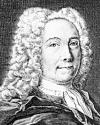
Born 29 Jan 1688; died 29 Mar 1772 at age 84.
Swedish scientist, philosopher and theologian. While young, he studied mathematics and the natural sciences in England and Europe. From Swedenborg's inventive and mechanical genius came his method of finding terrestrial longitude by the Moon, new methods of constructing docks and even tentative suggestions for the submarine and the airplane. Back in Sweden, he started (1715) that country's first scientific journal, Daedalus Hyperboreus. His book on algebra was the first in the Swedish language, and in 1721 he published a work on chemistry and physics. Swedenborg devoted 30 years to improving Sweden's metal-mining industries, while still publishing on cosmology, corpuscular philosophy, mathematics, and human sensory perceptions.
Swedish scientist, philosopher and theologian. While young, he studied mathematics and the natural sciences in England and Europe. From Swedenborg's inventive and mechanical genius came his method of finding terrestrial longitude by the Moon, new methods of constructing docks and even tentative suggestions for the submarine and the airplane. Back in Sweden, he started (1715) that country's first scientific journal, Daedalus Hyperboreus. His book on algebra was the first in the Swedish language, and in 1721 he published a work on chemistry and physics. Swedenborg devoted 30 years to improving Sweden's metal-mining industries, while still publishing on cosmology, corpuscular philosophy, mathematics, and human sensory perceptions.
The Generative Organs, Considered Anatomically, Physically and Philosophically, by Emanuel Swedenborg. - book suggestion.
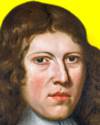
Baptized c. 29 Jan 1631; died 17 Jan 1691.
English physician and physiologist who made the first direct transfusion of blood from one animal to the veins of another (in dogs, 1665). In the early 1660s, he had worked as the assistant of Thomas Willis in Oxford, and became famous for his anatomical work on the brain and nerves. The idea of injecting blood into a living animal, and of doing this not by syringe or bladder, but from one animal to another, was first mentioned by Lower in a Jun 1664 letter to Robert Boyle. In 1665, Lower experimented with dogs. Then in 1666, at the Royal Society, Lower performed (for the first time in England) a transfusion of blood into a human. Arthur Coga, a man described as an "eccentric scholar", was persuaded to receive a transfusion of sheep's blood. The experiment was deemed successful. One of the aims of this experiment had been to see what qualities might be transmitted through transfused blood. (The first ever human blood transfusion was done in Paris). Lower was one of the most skilled and accomplished vivisectionalists of his time. Later, he became the most celebrated physician in London for a while. He published his most important work, Tractatus de corde in 1669, his own anatomical and physiological investigation of the structure and action of the heart.DNB (1909) gives born in 1631 and also states 'Richard was baptised ... 29 Jan 1631-2.' DSB gives the same year of birth without further information.]
English physician and physiologist who made the first direct transfusion of blood from one animal to the veins of another (in dogs, 1665). In the early 1660s, he had worked as the assistant of Thomas Willis in Oxford, and became famous for his anatomical work on the brain and nerves. The idea of injecting blood into a living animal, and of doing this not by syringe or bladder, but from one animal to another, was first mentioned by Lower in a Jun 1664 letter to Robert Boyle. In 1665, Lower experimented with dogs. Then in 1666, at the Royal Society, Lower performed (for the first time in England) a transfusion of blood into a human. Arthur Coga, a man described as an "eccentric scholar", was persuaded to receive a transfusion of sheep's blood. The experiment was deemed successful. One of the aims of this experiment had been to see what qualities might be transmitted through transfused blood. (The first ever human blood transfusion was done in Paris). Lower was one of the most skilled and accomplished vivisectionalists of his time. Later, he became the most celebrated physician in London for a while. He published his most important work, Tractatus de corde in 1669, his own anatomical and physiological investigation of the structure and action of the heart.DNB (1909) gives born in 1631 and also states 'Richard was baptised ... 29 Jan 1631-2.' DSB gives the same year of birth without further information.]
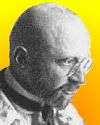
Died 29 Jan 1934 at age 65 (born 9 Dec 1868). quotes
German physical chemist, winner of the Nobel Prize for Chemistry (1918) for his development of a method of synthesizing ammonia (1909) directly from nitrogen and hydrogen. This led to commercial large-scale production of nitrogen fertilizer. With the expertise of Carl Bosch, a chemist working at the Badische Anilin- und Soda- Fabrik (BASF), obstacles which hindered the large-scale adoption of the process were overcome and the Haber-Bosch process was born. The Haber-Bosch high pressure process followed in the 1920s. Haber was also responsible for introducing poison gases for chemical warfare in WW I. Being a Jew, he left Germany in 1933 to go into exile in Britain, working in Cambridge at the Cavendish Laboratory. more
German physical chemist, winner of the Nobel Prize for Chemistry (1918) for his development of a method of synthesizing ammonia (1909) directly from nitrogen and hydrogen. This led to commercial large-scale production of nitrogen fertilizer. With the expertise of Carl Bosch, a chemist working at the Badische Anilin- und Soda- Fabrik (BASF), obstacles which hindered the large-scale adoption of the process were overcome and the Haber-Bosch process was born. The Haber-Bosch high pressure process followed in the 1920s. Haber was also responsible for introducing poison gases for chemical warfare in WW I. Being a Jew, he left Germany in 1933 to go into exile in Britain, working in Cambridge at the Cavendish Laboratory. more
Fritz Haber: Chemist, Nobel Laureate, German, Jew: A Biography, by Dietrich Stoltzenberg. - book suggestion.
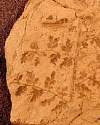
Died 29 Jan 1934 at age 79 (born 28 Nov 1854).
English paleobotanist and leading authority of his time on the structure of fossil plants, one of those who laid the foundations of paleobotany. After studying for his PhD (1882) under German botanist Julius Von Sachs at the University Würzburg, he returned to England and took up teaching. He conducted experiments in the Jodrell Laboratory in Kew Gardens, where he became its honorary keeper (1892-1906). In collaboration with W.C. Williamson, he wrote three papers on fossil-plant morphology (1894-95). Scott continued writing papers after Williamson's death and in which he described many otherwise unknown fossil plants. He wrote the classic Studies in Fossil Botany, which greatly popularized the subject.[Image: Lyginopteris bermudensiformis]
English paleobotanist and leading authority of his time on the structure of fossil plants, one of those who laid the foundations of paleobotany. After studying for his PhD (1882) under German botanist Julius Von Sachs at the University Würzburg, he returned to England and took up teaching. He conducted experiments in the Jodrell Laboratory in Kew Gardens, where he became its honorary keeper (1892-1906). In collaboration with W.C. Williamson, he wrote three papers on fossil-plant morphology (1894-95). Scott continued writing papers after Williamson's death and in which he described many otherwise unknown fossil plants. He wrote the classic Studies in Fossil Botany, which greatly popularized the subject.[Image: Lyginopteris bermudensiformis]
Died 29 Jan 1929 at age 69 (born 5 Aug 1859).
American biochemist who made major contributions to understanding the chemistry of vegetable proteins. He and his collaborator Lafayette Mendel showed that tryptophan and lysine are essentials in diet for healthy growth. They discovered another essential, a fat-soluble substance, in butter (now known as vitamin A). Similar work revealing that substance, published three weeks earlier was done by Elmer Verner McCollum and Marguerite Davis, who also found it in egg yolks (1912).
American biochemist who made major contributions to understanding the chemistry of vegetable proteins. He and his collaborator Lafayette Mendel showed that tryptophan and lysine are essentials in diet for healthy growth. They discovered another essential, a fat-soluble substance, in butter (now known as vitamin A). Similar work revealing that substance, published three weeks earlier was done by Elmer Verner McCollum and Marguerite Davis, who also found it in egg yolks (1912).
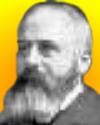
Died 29 Jan 1929 at age 78 (born 8 Sep 1850). quotes
German dermatologist whose life-long interest in the skin and its diseases began before he left medical school. By 1881, he had opened a private skin clinic, but within a few years changed direction by establishing an institution where he taught students in his specialty. He became known internationally in his field after writing a book on histopathology (1884), which became a classic work. A disease he described in 1927 is still known by his name. He researched treatments for skin diseases, and introduced the use of ichtyol and resorcin. His name is also remembered for the Unna-Pappenheim stain, the most common stain for blood smears.«
German dermatologist whose life-long interest in the skin and its diseases began before he left medical school. By 1881, he had opened a private skin clinic, but within a few years changed direction by establishing an institution where he taught students in his specialty. He became known internationally in his field after writing a book on histopathology (1884), which became a classic work. A disease he described in 1927 is still known by his name. He researched treatments for skin diseases, and introduced the use of ichtyol and resorcin. His name is also remembered for the Unna-Pappenheim stain, the most common stain for blood smears.«
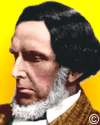
Died 29 Jan 1891 at age 79 (born 8 Apr 1811).
Robert Forester Mushet was an English metallurgist who developed a method of manufacturing steel (1856) by the addition of manganese, which improved on the Bessemer process. His Dark Hill Furnace was at Coleford, in the Forest of Dean. He produced steel that was more malleable. He was the first to make durable rails of steel (replacing cast iron) which was important to the development of railways throughout the world. Mushet invented tungsten steel in 1868, which made a tougher tool steel, able to cut and machine harder metals at faster speed. Despite their importance, which made fortune for others (including Bessemer), Mushet did not successfully capitalize on his discoveries.« more
Robert Forester Mushet was an English metallurgist who developed a method of manufacturing steel (1856) by the addition of manganese, which improved on the Bessemer process. His Dark Hill Furnace was at Coleford, in the Forest of Dean. He produced steel that was more malleable. He was the first to make durable rails of steel (replacing cast iron) which was important to the development of railways throughout the world. Mushet invented tungsten steel in 1868, which made a tougher tool steel, able to cut and machine harder metals at faster speed. Despite their importance, which made fortune for others (including Bessemer), Mushet did not successfully capitalize on his discoveries.« more
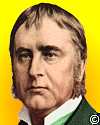
July 1881
Died 29 Jan 1890 at age 73 (born 31 Dec 1816). quotes
English physician (1st Baronet) who was prominent in his field, and a leading clinical teacher, at Guy’s Hospital, London, for most of his life. After he successfully treated the Prince of Wales for typhoid, he was created a baronet (1872). Queen Victoria also was one of his patients. He wrote the first description of syringomyelia (1862). The disease for which he remains known, Gull’s disease, had been described before him, but by 1874, Gull had associated myxoedema with atrophy of the thyroid gland, which he viewed as an adult form of cretinism. He coined the term Anorexia Nervosa (1874) for a “nervous loss of appetite,” known since it had been described by physician, Richard Morton (1689). He believed in minimal use of drugs, but supported the use of vivisection in research.«
English physician (1st Baronet) who was prominent in his field, and a leading clinical teacher, at Guy’s Hospital, London, for most of his life. After he successfully treated the Prince of Wales for typhoid, he was created a baronet (1872). Queen Victoria also was one of his patients. He wrote the first description of syringomyelia (1862). The disease for which he remains known, Gull’s disease, had been described before him, but by 1874, Gull had associated myxoedema with atrophy of the thyroid gland, which he viewed as an adult form of cretinism. He coined the term Anorexia Nervosa (1874) for a “nervous loss of appetite,” known since it had been described by physician, Richard Morton (1689). He believed in minimal use of drugs, but supported the use of vivisection in research.«
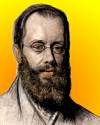
1857

Red and Yellow Maccaw
English artist of nature and landscape works who is better known as the creator of limericks and nonsense poetry. In his late teens, in 1832, he was hired as an illustrator by the London Zoological Society. These notably precise and vivid drawings of parrots were published in The Family of the Psittacidae (1832), the first large-scale volume of colored drawings of parrots to appear in England, and among the first color plates of animals ever published in Great Britain. In the same year, he was invited by the Earl of Denby to reside at his estate where he painted animals from the earl's menagerie. He stayed there until 1836. His first book of poems, published ten years later, A Book of Nonsense (1846) was composed for the grandchildren of the Denby household.«
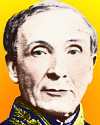
1869
Died 29 Jan 1883 at age 78 (born 18 Sep 1804). quotes
Charles Emmanuel Sédillot was a French surgeon who coined the word microbe for a microorganism in 1871, which Émile Littré included in the 1886 edition of his Dictionary of Medicine. Sédillot started his career as a military doctor (1825) and served in the Polish campaign as a surgeon's aide. By 1841, he became a professor of clinical surgery at Strasbourg military hospital. Sédillot was a pioneer in aseptic surgery, and promoted the use of chloroform anesthesia. Among other surgical techniques he developed, he was the first to apply a stomach fistula, and coined the term gastrostomy for that operation. He was the author of numerous publications, including the first book in France on anesthesia (Jan 1848). Later in life he suffered progressive deafness, and no longer able to participate in learned societies, he retired.«
Charles Emmanuel Sédillot was a French surgeon who coined the word microbe for a microorganism in 1871, which Émile Littré included in the 1886 edition of his Dictionary of Medicine. Sédillot started his career as a military doctor (1825) and served in the Polish campaign as a surgeon's aide. By 1841, he became a professor of clinical surgery at Strasbourg military hospital. Sédillot was a pioneer in aseptic surgery, and promoted the use of chloroform anesthesia. Among other surgical techniques he developed, he was the first to apply a stomach fistula, and coined the term gastrostomy for that operation. He was the author of numerous publications, including the first book in France on anesthesia (Jan 1848). Later in life he suffered progressive deafness, and no longer able to participate in learned societies, he retired.«
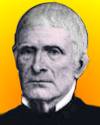
Died 29 Jan 1859 at age 73 (born 19 Aug 1785).
American clock manufacturer who was one of the pioneers in the mass production of clocks. After working with Eli Terry and Silas Hoadley in firm of Terry, Thomas & Hoadley, which manufactured clocks by mass production methods (1807), Thomas founded a clock factory of his own at Plymouth Hollow, Conn. (1812). He was not an inventive genius, but he was an excellent mechanic and a keen business man. Two years later he paid Terry for the rights to manufacture the latter's popular shelf clock. Shortly, he was selling as many clocks as Terry. As his business developed Thomas built a mill for rolling brass and making wire at Plymouth Hollow, and operated it in conjunction with the clock factory. Finally, he organized the Seth Thomas Clock Co. (1853).
American clock manufacturer who was one of the pioneers in the mass production of clocks. After working with Eli Terry and Silas Hoadley in firm of Terry, Thomas & Hoadley, which manufactured clocks by mass production methods (1807), Thomas founded a clock factory of his own at Plymouth Hollow, Conn. (1812). He was not an inventive genius, but he was an excellent mechanic and a keen business man. Two years later he paid Terry for the rights to manufacture the latter's popular shelf clock. Shortly, he was selling as many clocks as Terry. As his business developed Thomas built a mill for rolling brass and making wire at Plymouth Hollow, and operated it in conjunction with the clock factory. Finally, he organized the Seth Thomas Clock Co. (1853).
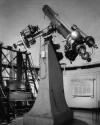
Died 29 Jan 1859 at age 69 (born 9 Sep 1789).
American astronomer who, with his son, George Phillips Bond (1825-65), discovered Hyperion, the eighth satellite of Saturn, and an inner ring called Ring C, or the Crepe Ring. While W.C. Bond was a young clockmaker in Boston, he spent his free time in the amateur observatory he built in part of his home. In 1815 he was sent by Harvard College to Europe to visit existing observatories and gather data preliminary to the building of an observatory at Harvard. In 1839 the observatory was founded. He supervised its construction, then became its first director. Together with his son he developed the chronograph for automatically recording the position of stars. They also took some of the first recognizable photographs of celestial objects.Image: The Harvard College Observatory's 15-inch telescope known as “The Great Refractor”, installed 1846.
American astronomer who, with his son, George Phillips Bond (1825-65), discovered Hyperion, the eighth satellite of Saturn, and an inner ring called Ring C, or the Crepe Ring. While W.C. Bond was a young clockmaker in Boston, he spent his free time in the amateur observatory he built in part of his home. In 1815 he was sent by Harvard College to Europe to visit existing observatories and gather data preliminary to the building of an observatory at Harvard. In 1839 the observatory was founded. He supervised its construction, then became its first director. Together with his son he developed the chronograph for automatically recording the position of stars. They also took some of the first recognizable photographs of celestial objects.Image: The Harvard College Observatory's 15-inch telescope known as “The Great Refractor”, installed 1846.
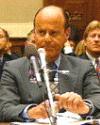
In 1998, for the first time, a top tobacco company executive acknowledged the health risk of tobacco products under oath to Congress. This testimony by Steven Goldstone, RJR Nabisco chairman and CEO, came at a hearing where industry leaders pushed Congress to enact a $368.5 billion deal giving them partial immunity from future lawsuits. As recently as 1994, seven tobacco industry executives had stood before the House Commerce Committee and sworn nicotine is not addictive.
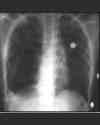
In 1993, a daughter received lung material from both her mother and father to treat the effects of cystic fibrosis. This operation, performed in Los Angeles by Dr. Starnes at USC University Hospital, was the first in the world double-lobar living related transplant. Transplantation from a living, related family member is beneficial because it provides an immediate donor source and reduces the likelihood of rejection.
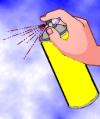
In 1978, Sweden became the first nation to curb aerosol sprays to halt the destruction of the ozone layer.
In 1960, an artificial kidney that operates without human monitoring was announced.
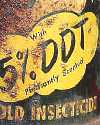
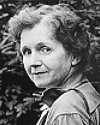
Carson
Silent Spring, by Rachel Carson. - book suggestion.
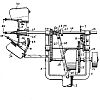
In 1924, the first U.S. patent for an ice cream cone rolling machine was issued to its inventor, Carl R. Taylor of Cleveland, Ohio, in which it was described as a “machine for forming thin, freshly baked wafers while still hot into cone shaped containers” for ice-cream. Multiple dies were designed on a turntable, such that when formed, the cone had time to cool and harden before rotating into position for release. The whole machine was to be set up beside a batter baking machine which provides the supply of the hot, flat wafers (No. 1,481,813).Image: detail of one die from the series set around the machines's turntable.
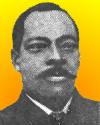
In 1901, the prolific black American inventor, Granville T. Woods, received one of his patents related to the operation of an electric railway (No. 667,110). It applied to the kind of electric trains which take their power from conductors in the road-bed. For practical purposes, the current is fed only at the time that the train has its contact makers engaged with the conductors. The current flow is controlled by electro-magnetic switches along the line of way. Woods had previously designed and patented a suitable device for this purpose, but this patent improved upon that design. He assigned it to the General Electric Co. of New York.
Black Inventors in the Age of Segregation, by Rayvon Fouche. - book suggestion.
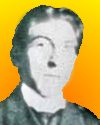
1895
In 1896, Émil H. Grubbe, a Chicago researcher, became the first known to administer x-ray radiation treatment for the recurrent breast cancer of a fifty-five-year-old woman. X-rays had been discovered the previous year in Germany. Grubbe tried radiation as a tool against cancer after he suffered a radiation burn while experimenting with X-rays. His experiment didn't cure the woman's cancer, but others in the late 1890s who applied X-rays to various cancers - especially skin cancer - not only relieved cancer pain but actually cured some, which encouraged continued use and study of the X-rays. Grubbe did not publish his work until several years later, and his claims of priority as the first to use radiation treatment were widely doubted.
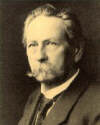
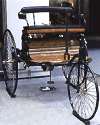
The Invention of the Automobile (Karl Benz and Gottlieb Daimler), by St. John C Nixon. - book suggestion.
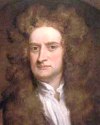
Newton
In 1697*, Isaac Newton received a copy of Johann Bernoulli's challenge, the long-standing brachistochrone problem. Newton solved it the same day. Bernoulli's new year's present on 1 Jan 1697 to the mathematical world was the problem: “To determine the curved line joining two given points, situated at different distances from the horizontal and not in the same vertical line, along which the mobile body, running down by its own weight and starting to move from the upper point, will descend most quickly to the lower point.” (Bernoulli coined the name from Gr. brachistos, shortest; and chronos, time.) Newton forwarded his solution to the Royal Society—anonymously. When Bernoulli read the solution, he shrewly guessed it was Newton's work. By legend, he said, “I recognize the lion by his paw.”«[* 29 Jan is by the Julian calendar still in use in England at the time. To Bernoulli, in France, on the Gregorian calendar, it was 8 Feb. The year 1697 is is the historical year as we presently use it. But to Newton it was still the civil year of 1696. In England at that time, the year did not increment until the civil new year on 25 Mar. So anything Newton wrote until 25 Mar, he would date as 1696. This ambiguity of the date Newton received the letter is indicated as 29 Jan 1696/7.]




